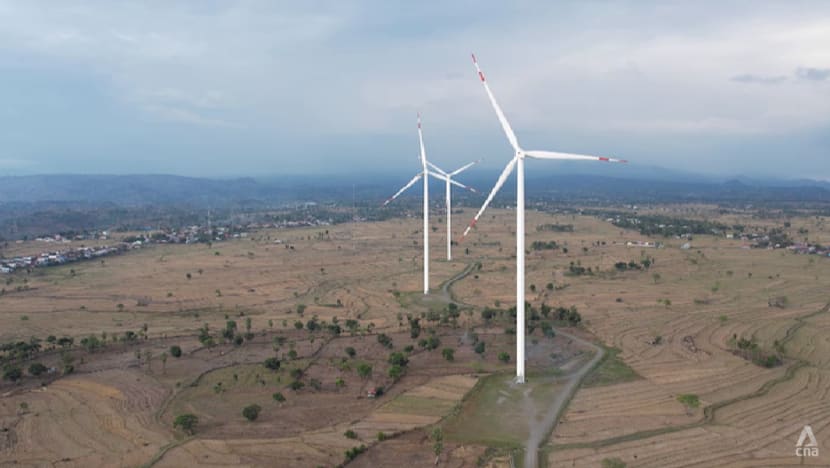World
Indonesia Expands Tolo Wind Farm to Increase Renewable Energy Capacity

Indonesia is set to expand the Tolo Wind Farm in South Sulawesi, a move aimed at increasing the share of renewable energy in the country’s energy mix. Construction is slated to begin in late 2024, with the expansion expected to add approximately 130 megawatts (MW) of new capacity to the existing facility.
Located about 6 kilometers inland from the South Sulawesi coast, the Tolo Wind Farm commenced operations in 2019. With its 20 turbines spread across 60 hectares, the site currently generates around 72 MW of clean electricity, sufficient to power about 320,000 households.
Utilizing Natural Resources
Indonesia’s extensive coastlines present abundant wind resources, and the Tolo project capitalizes on the region’s high average annual wind speeds, according to operator Vena Energy. The wind turbines employ direct drive technology, which minimizes moving parts and eliminates the need for a gearbox between the rotor and the generator. This technology allows the turbines to generate power even during the low-wind season, which lasts from November to May, as they require a minimum wind speed of only 3 meters per second.
Wahyudin Beta, the asset manager for Vena Energy, explained that maintenance schedules align with seasonal wind patterns. “We take advantage of the low-wind period to proactively perform maintenance and procure spare parts, ensuring that all work is completed before the high-wind season begins,” he stated. This strategy enables the company to maximize production during peak wind conditions.
Financial Backing and Community Engagement
Projects like Tolo necessitate substantial upfront investment. The Asian Development Bank (ADB) provided partial financing for the initial phase of the wind farm, amounting to a loan of US$56 million. Jiro Tominaga, ADB’s country director for Indonesia, highlighted three critical factors in their financing decision. First, he noted the importance of the project’s long-term viability and bankability, which ensures that it is built and operated within budget and capacity. Second, the technical soundness of the project was essential, ensuring that proven technologies are used. Finally, Tominaga emphasized the need for environmental and social safeguards, which include considerations such as resettlement, biodiversity, and community engagement.
The construction of the wind farm required land from residents across eight villages. One local resident from Parasangan Beru shared that the land acquisition process was smooth, as his land was purchased for an access road. “All residents are satisfied as their land was bought at a fair price. Without official sale deeds, the land could have been taken by others,” he remarked. The resident appreciated that all payments were made in cash, which helped prevent future disputes and fostered good relations between the community and the company.
Future Developments and Challenges
Indonesia’s state-owned utility company, PLN, has issued a tender for the next phase of the Tolo Wind Farm, with results expected by mid-December. Rudy Sembiring, Vena Energy’s country head for Indonesia, indicated that construction could commence in late 2026 or early 2027 if the company’s bid is successful. This phase might include around eight to ten new turbines, each with a capacity between 6 MW and 7 MW.
“Developments in turbine technology mean that turbines are now much larger than they used to be. We are looking at fewer turbines, but by no means on a smaller scale,” Sembiring explained.
Despite Indonesia’s significant potential for wind energy, estimated at 150 gigawatts, the country currently generates only a fraction of that, producing about 150 MW. One of the main challenges is the slow expansion of power grids necessary to support the growth of renewable energy. Fabby Tumiwa, CEO of the Institute for Essential Services Reform, a think tank focused on energy, described this as a critical issue. “Building the project itself may take three to four years. But building the grid could take longer. You need to ensure that you can build the grid on time so that when wind projects are ready to be connected, the infrastructure is in place,” he stated.
Originally, Indonesia aimed to generate 23 percent of its energy from renewables by 2025, as set out in the country’s 2014 National Energy Policy. However, this target has been revised downward to between 17 percent and 20 percent, attributed to slower-than-expected progress in the renewable energy sector.
-

 Lifestyle4 months ago
Lifestyle4 months agoHumanism Camp Engages 250 Youths in Summer Fest 2025
-

 Business4 months ago
Business4 months agoKenvue Dismisses CEO Thibaut Mongon as Strategic Review Advances
-

 Sports4 months ago
Sports4 months agoDe Minaur Triumphs at Washington Open After Thrilling Comeback
-

 Top Stories4 months ago
Top Stories4 months agoColombian Senator Miguel Uribe Shows Signs of Recovery After Attack
-

 Sports4 months ago
Sports4 months agoTupou and Daugunu Join First Nations Squad for Lions Clash
-

 Health4 months ago
Health4 months agoNew Study Challenges Assumptions About Aging and Inflammation
-

 World4 months ago
World4 months agoASEAN Gears Up for Historic Joint Meeting of Foreign and Economic Ministers
-

 Business4 months ago
Business4 months agoOil Prices Surge Following New EU Sanctions on Russia
-

 Entertainment4 months ago
Entertainment4 months agoDetaşe-Sabah Violin Ensemble Captivates at Gabala Music Festival
-

 Entertainment4 months ago
Entertainment4 months agoBaku Metro Extends Hours for Justin Timberlake Concert
-

 Business4 months ago
Business4 months agoU.S. House Approves Stablecoin Bill, Sends to Trump for Signature
-

 Top Stories4 months ago
Top Stories4 months agoRethinking Singapore’s F&B Regulations Amid Business Closures









